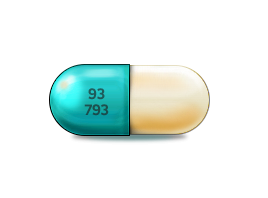Buy Chloromycetin Online

Chloromycetin is not prescribed to patients with individual intolerance to chloramphenicol, as well as fungal skin lesions, psoriasis, eczema, and inhibition of hematopoietic function.
Chloromycetin: composition, indications, dosage, side effects
Chloromycetin (Chloramphenicol) is produced in the form of tablets. The active ingredient is Chloramphenicol.
Indications
Chloromycetin is used in the treatment of generalized forms of salmonellosis, tularemia, paratyphoid, rickettsiosis, typhoid, brucellosis, chlamydia and meningitis.
In addition, Chloromycetin can be used in the treatment of other infectious diseases, if they are caused by a microflora sensitive to chloramphenicol. It is often used when other antibacterial drugs are ineffective or if their appointment to this patient is impossible due to individual intolerance to their components. In ophthalmic practice, Chloromycetin is used to treat conjunctivitis, blepharitis, and keratitis.
Contraindications
Chloromycetin is not prescribed to patients with individual intolerance to chloramphenicol, as well as fungal skin lesions, psoriasis, eczema, and inhibition of hematopoietic function. In addition, the drug in all dosage forms is not prescribed to pregnant, lactating and newborns, since in infants it can cause the appearance of "gray syndrome", characterized by the appearance of nausea, a decrease in temperature, flatulence and blue-gray skin color, caused by progressive cyanosis, shortness of breath and symptoms of cardiovascular failure.
Use during pregnancy and lactation
Chloromycetin in the treatment of nursing and pregnant women is used only if it is impossible to choose a safer alternative medication for the treatment of women.
Method of administration and dosage
Chloromycetin in the form of capsules and tablets is taken orally 30 minutes before meals. If the patient has severe nausea or vomiting, then the drug should be taken an hour after eating. The patient can receive from 2 to 4 mg of the drug divided into 4 doses per day.
Children who are under three years of age receive from 10 to 15 mg per kg of body weight. Children from 3 to 8 years of age are prescribed the drug for 0.15 or 0.2 g per reception, children over 8 years of age take 0.6 or 1.2 g of the drug per day. The duration of treatment is from 7 to 10 days. If necessary, it is possible to increase the course of treatment to 14 days.
The solution and liniment for external use is used for application to the affected areas of the skin from 2 to 3 times a day. Liniment can be applied under an occlusive dressing. The drug should be used before cleaning the wound surface.
Eye drops are intended for instillation in the conjunctival sac. The installation is carried out from 1 to 3 times a day for 7 days.
The dosage of parenteral forms of Chloromycetin is selected individually, taking into account the severity of the disease.
Overdose
The use of local forms of Chloromycetin is not accompanied by the development of overdose. When using the oral and parenteral forms of the drug in high doses, the patient has the development of cardiovascular syndrome. In addition, when taking the drug in high doses, the patient has the appearance of a gray skin tone, respiratory failure and myocardial insufficiency. The probability of a fatal outcome reaches 40%. To stabilize the patient's condition, hemosorption measures are performed and appropriate symptomatic therapy is prescribed.
Side effects
When taking Chloromycetin, some patients develop delirium, psychomotor disorders, depression, nausea, dermatitis, headaches, hallucinations, stool disorders, angioedema, hearing disorders, cardiovascular collapse, visual disturbances, changes in taste sensations, urticaria, optic neuritis, itching.
Storage conditions and terms
The duration of storage of Chloromycetin depends on the form of release: tablets and capsules are stored for no more than 3 years, powder for preparing a solution for injection-4 years, eye drops before opening the bottle-2 years, and after opening 1 month.In addition, Chloramphenicol can be used in the treatment of other infectious diseases, if they are caused by a microflora sensitive to chloramphenicol. It is often used when other antibacterial drugs are ineffective or if their appointment to this patient is impossible due to individual intolerance to their components. In ophthalmic practice, Chloromycetin is used to treat conjunctivitis, blepharitis, and keratitis.
Contraindications
Chloromycetin is not prescribed to patients with individual intolerance to chloramphenicol, as well as fungal skin lesions, psoriasis, eczema, and inhibition of hematopoietic function. In addition, the drug in all dosage forms is not prescribed to pregnant, lactating and newborns, since in infants it can cause the appearance of "gray syndrome", characterized by the appearance of nausea, a decrease in temperature, flatulence and blue-gray skin color, caused by progressive cyanosis, shortness of breath and symptoms of cardiovascular failure.
